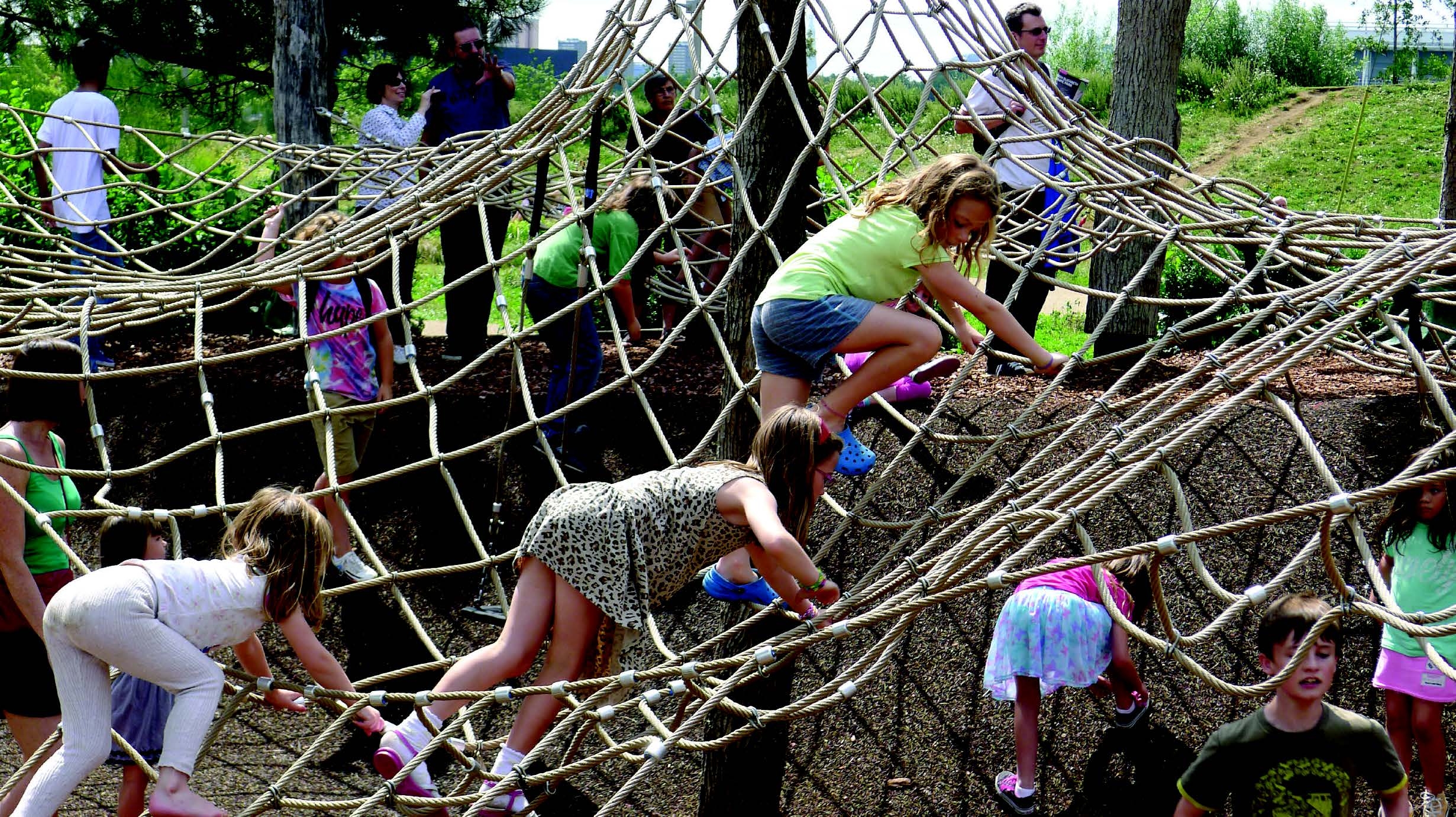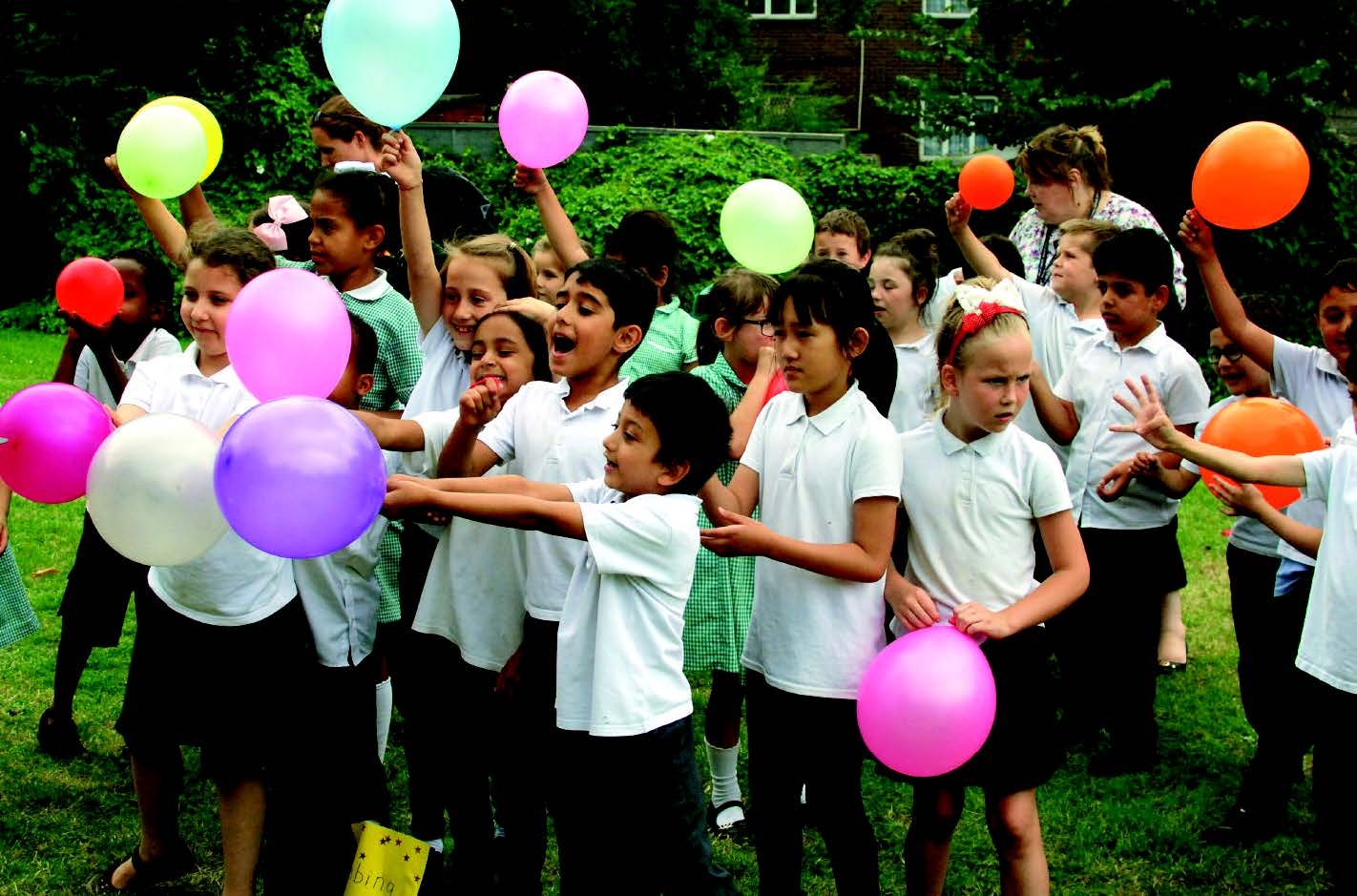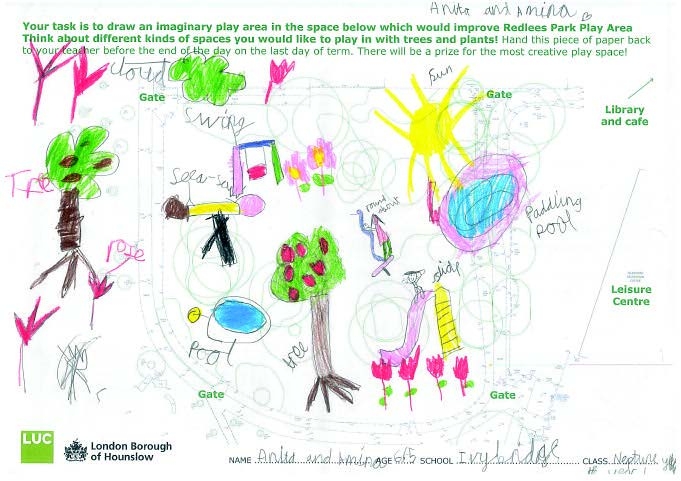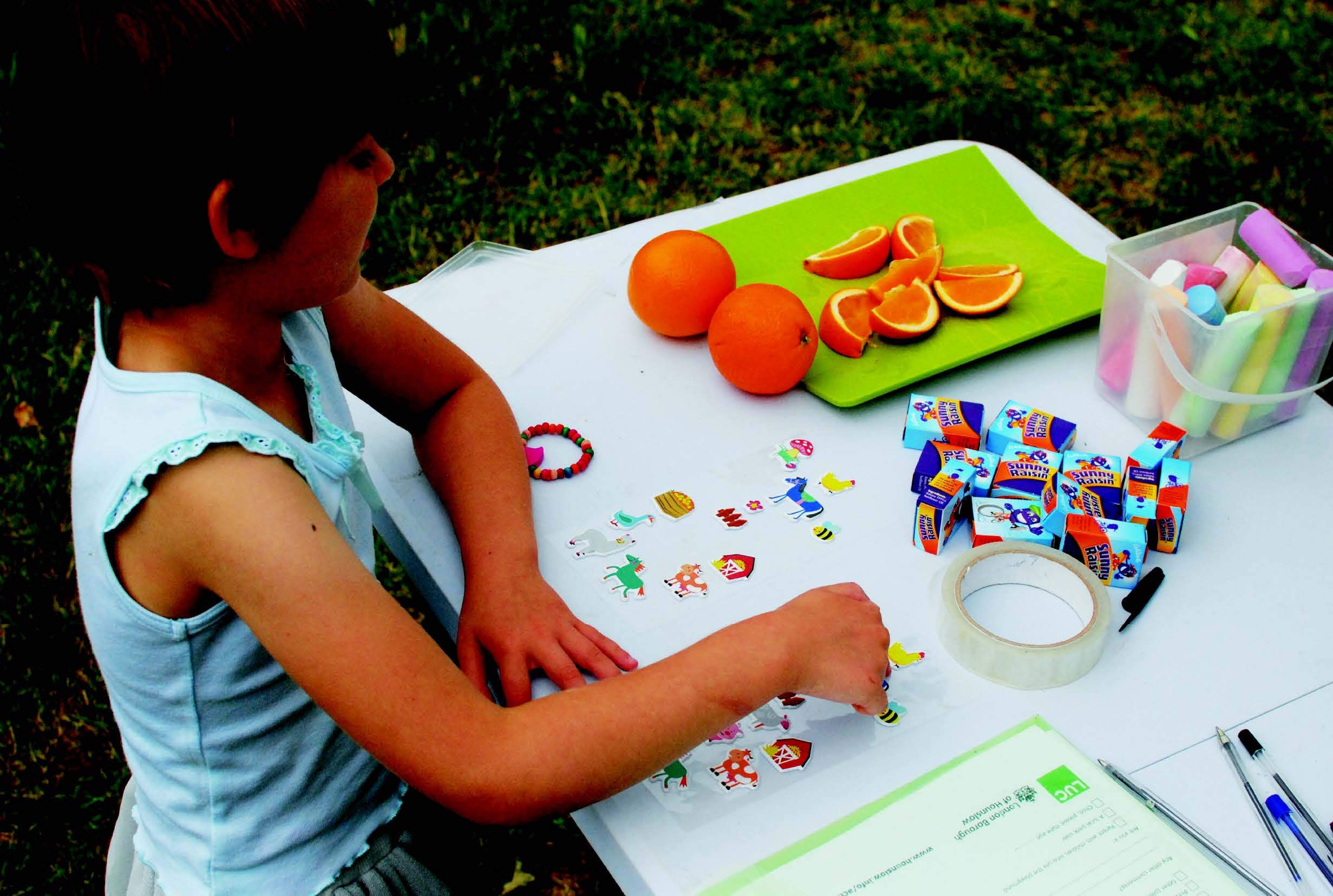
Creating active environments is one of the commitments in Hounslow Council’s new 10 year plan for physical activity. The aim is to address health inequalities by reducing the number of inactive residents by half by 2025. With the help of local and national delivery partners the council believes this ambitious target can be achieved.
The borough of Hounslow has the eighth highest proportion of green space in London, offering local residents’ easy access to outdoor activities. But increasing pressure on parks budgets in recent years has meant that some play areas have closed or become tired and in need of refurbishment. To rectify this, the council is investing £1.1m in 2017/18 to improve selected sites across the borough, believing you can still achieve innovative, high quality, design-led playgrounds amidst the current challenges facing local authorities.
Four new inspiring spaces
Hounslow Council has partnered with multi-award winning architects LUC to design four inspiring new Active Spaces at existing playground sites in the borough. Statistics chart the rise in childhood obesity in the UK and there is an understanding that outdoor physical activity impacts health. So the Active Spaces project aims to encourage children and their families to be more active in their day to day lives, promoting usage, community involvement and participation.
LUC is a specialist in play and landscape design, with unique play environments designed for children and young people across the UK. Award-winning projects include Tumbling Bay in the Olympic Park, a challenging natural play space for children of all ages and abilities, and the much-loved Princess Diana Memorial Playground in Kensington Gardens.



Community consultation in the design phase
Research indicates that increased physical activity amongst children is supported by increased participation of their families, carers and the local community. So parents, carers and local community organisations were invited to take part in a series of design led engagement activities which took place during the summer. Residents were also encouraged to feedback via online questionnaires and via social media.
Twelve engagement events took place led by experienced play designers. They were designed to be fun and informative with games and activities for children. Healthy eating and physical activity advice for families was provided by Hounslow’s integrated health and wellbeing service, OneYou Hounslow.
LUC’s landscape architects also worked closely with the council as well as the community throughout the design phase to ensure that challenges were addressed and the community’s needs were met. Interactive workshops with school children and a design competition gave local pupils the opportunity to influence and inspire playground designs. Challenging climbing equipment, monkey bars and activity trails were just some of the activities suggested.
Design principles
Jennette Emery-Wallis, director of Landscape Architecture at LUC, believes that the issues facing local authorities can be addressed through the design process so that real impact can be achieved.
In summary
We know the environment plays a key role in increasing physical activity. With this project we wanted to create exciting new play areas which inspire children and families to be more active. The project has been successful in engaging many residents and community organisations in the design phase, maximising the benefits of investment in the borough” says councillor Samia Chaudhary, cabinet member of green policy and leisure.
Building of the new play spaces will begin early next year with completion expected in spring. Hounslow Council is partnering with St. Mary’s University who will conduct a research project to evaluate and measure the impact of the project.